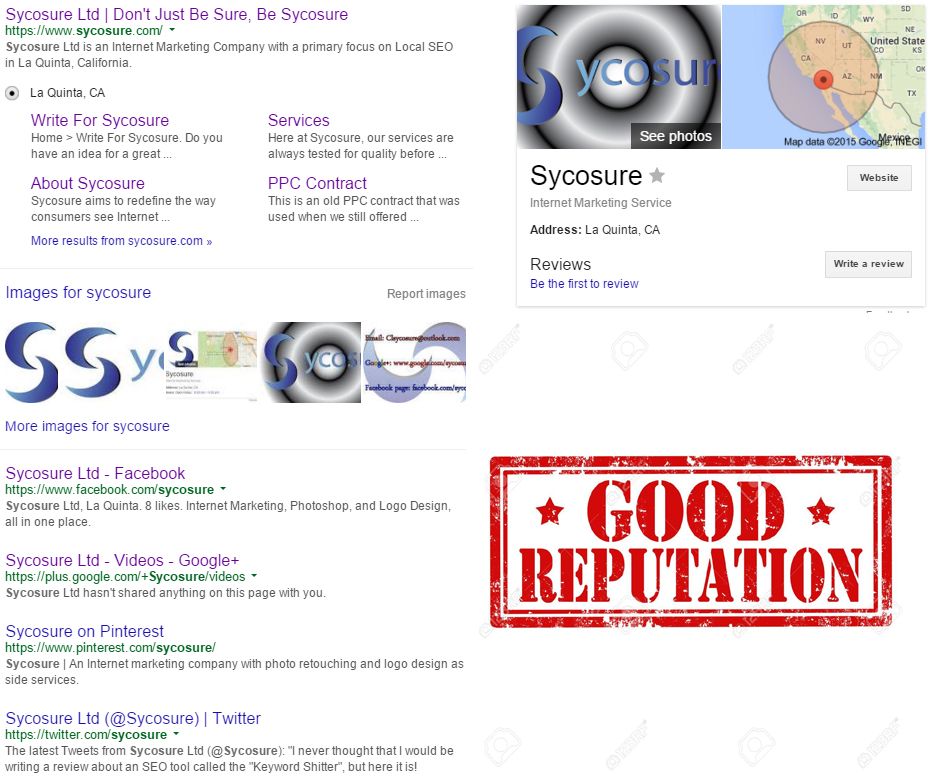Top 3 Free Search Engine Reputation Management Tricks
Most people get into search engine reputation management as soon as they see a bad review posted about them before they decide that it’s time to take action. This is called reactive search engine reputation management and it’s often a lot more difficult to do than proactive search engine reputation management, the latter of which is when you do what you can to make your online presence as clean as possible before any negative results start popping up. Today, I’m going to share 1 reactive method, a proactive method, and a method that can be used in both instances.
The Top 3 Free Search Engine Reputation Management Tricks
1. Reactive: Deindexing Ripoff Reports The Smart Way
Before I go over this method, I should warn you that the legality of this method is questionable and I have not had a chance to test it myself, so I’m only stating it for “educational purposes” as a “hypothetical method”. Because I like to give credit where credit is due, I originally found this method on the Internet marketing forum “Black Hat World”. The idea of the method goes something like this:
- You visit the Ripoff Report page that’s showing up in Google for your business or name.
- You then post a comment in broken English that lists your (fake!) “social security number, home address, and your hand written signature” (again, don’t post your real information).
- Once the comment appears on Ripoff Report, you use the Google Legal Troubleshooter to remove it by clicking, “I would like to remove my personal information from Google’s search results”, and then clicking, “I would like to remove my confidential, personal information from Google’s search results (e.g., security or government ID number, bank account or credit card number, or an image of your handwritten signature)”.
- After that, you’ll be sent to this Google Legal Troubleshooter, which is when you’ll click, “In Google’s search results and on a website”, and then you’ll click, “No, I prefer not to due to the nature of the information shown”, and then you’ll click, “A government-issued ID number”.
- Select the country you live in, then select “social security number”, and then fill out the form.
- Wait a couple of days and Google should deindex the page in most cases.
2. Proactive & Reactive: Use Parasite Pages
Because I already have an article that goes over Parasite SEO on this site, I’m just going to post an excerpt from the article that goes over what it is and how it works in addition to sharing my experience with using parasite pages as an online reputation management tactic.
You see, parasite pages are the pages on authority websites that rank in the search engine results pages for your keyword (usually your name or your company name). Many people find these parasite pages annoying as they may outrank their own websites, although parasite pages present a unique opportunity in the world of search engine optimisation and online reputation management (which often involves SEO).
Believe it or not, parasite SEO can work through building high quality backlinks to the URLs or by doing “negative SEO”. Yes, you read that correctly, I said negative SEO, however in this case you’re not trying to hurt the website (you wouldn’t be able to, anyway). You see, because parasite pages are pages on authority website, this means that they are much more resistant to spam techniques than your average blog (with Google either ignoring the spam or counting some of the links since the websites are trusted).
Now, parasite SEO using spammy backlinks doesn’t always work. In fact, it’s usually a hit or miss case as your results will either involve your parasite pages rising in rank and staying there “permanently” or your parasite pages being unaffected.
Now, here’s a story about my experience with parasite pages: a few months ago, I wanted to see if I could affect the positions of a few parasite pages in the search engine results pages (SERPs) appearing for an arbitrary keyword. I fired up GSA SER, created the spammiest backlinks I could, and waited to see how they would affect these pages. To my surprise, 2 out of 3 of the pages I targeted moved up quite a bit.
- The first page, which was already on the first page, moved to position 3 from position 7.
- The second page, which was on the second page, moved to position 5 on the first page.
- The third page, which was in position 8 prior to the blast, moved to position 7.
This wasn’t a particularly competitive keyword, so make of this test what you will.
3. Proactive: Start Doing Search Engine Reputation Management Before There Are Problems
Google my name, “Alistair Kavalt”, and look at how clean the search results are. You’ll see my profile pages, images of my certifications, and links to websites I’ve been on. This is what I’m talking about when I refer to proactive search engine reputation management; doing what you can to look good on search engines before any potential problems begin to arise.
Luckily for myself, I most likely don’t have to worry about negative reviews as I work closely with a small group of small businesses and individuals, but for those of you who have unscrupulous competitors, you may not be as lucky. So, just how do you go about doing proactive search engine reputation management? Here are a few ways you can get started:
- Create a Facebook profile for yourself and your business (make sure it’s indexed by search engines).
- Create a Google+ profile.
- Create a Twitter account.
- Create a profile or site for your name or your businesses’ name.
- Create a Linkedin account.
- Create a Pinterest account.
- Get backlinks with your name as the anchor text.
- Create a YouTube channel for yourself or your business.
- Guest post on other sites.
- Become an active member of an online community using your name.
Remember to fill out any of these profiles and pages and use your name or your business name as the target keyword.
Conclusion
As I mentioned before, it’s better to be proactive with your reputation rather than reactive. If you can take the time to do #3 early enough, it’ll save you from a whole host of problems later on should a jealous competitor decide to attack you or your business.
- Slow Website? Consider Robots As Being The Culprit - June 24, 2025
- My Experience Accepting Crypto Payments For The First Time - April 25, 2025
- Are Forums Dying? A Look Into Forums As A Whole - April 22, 2025


Leave a Reply